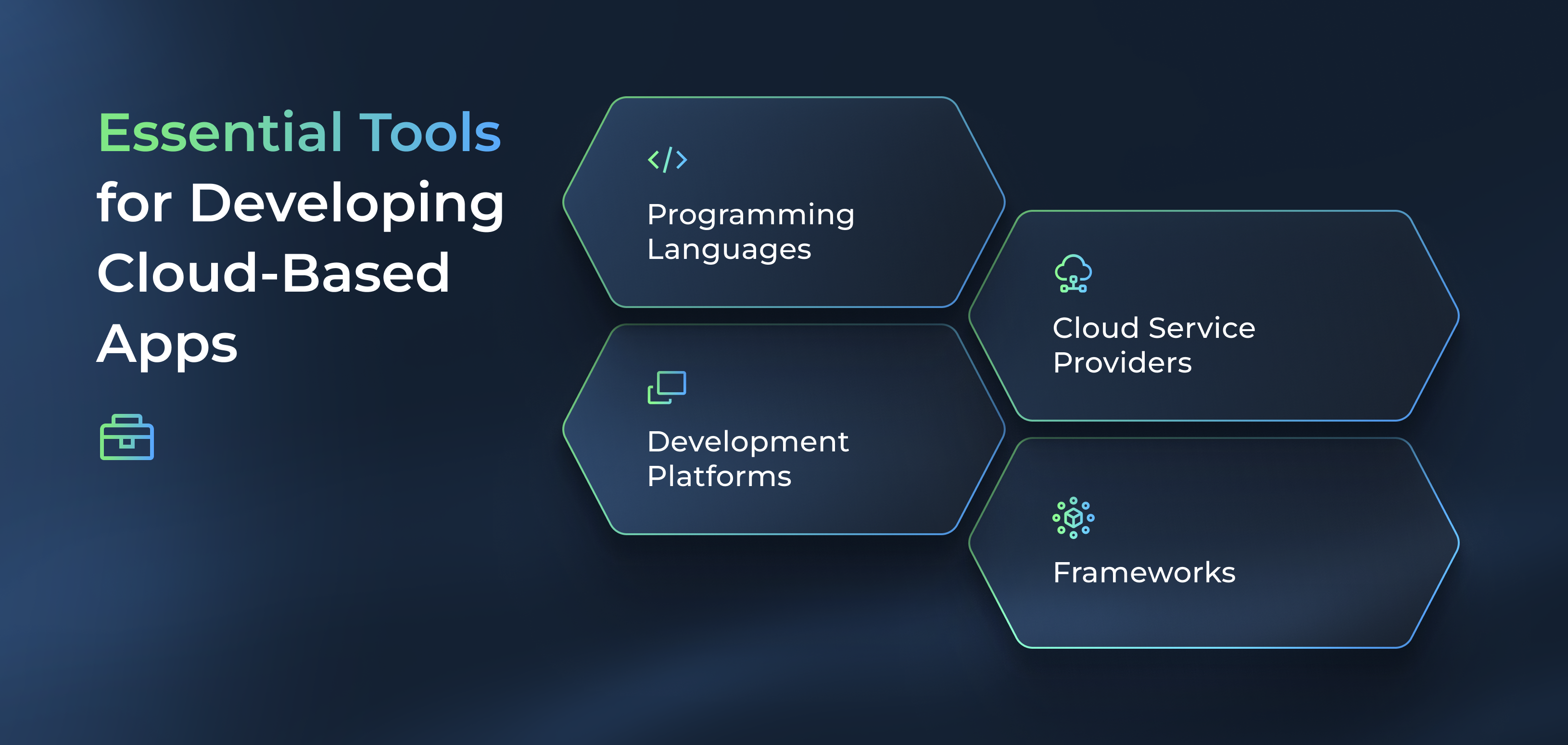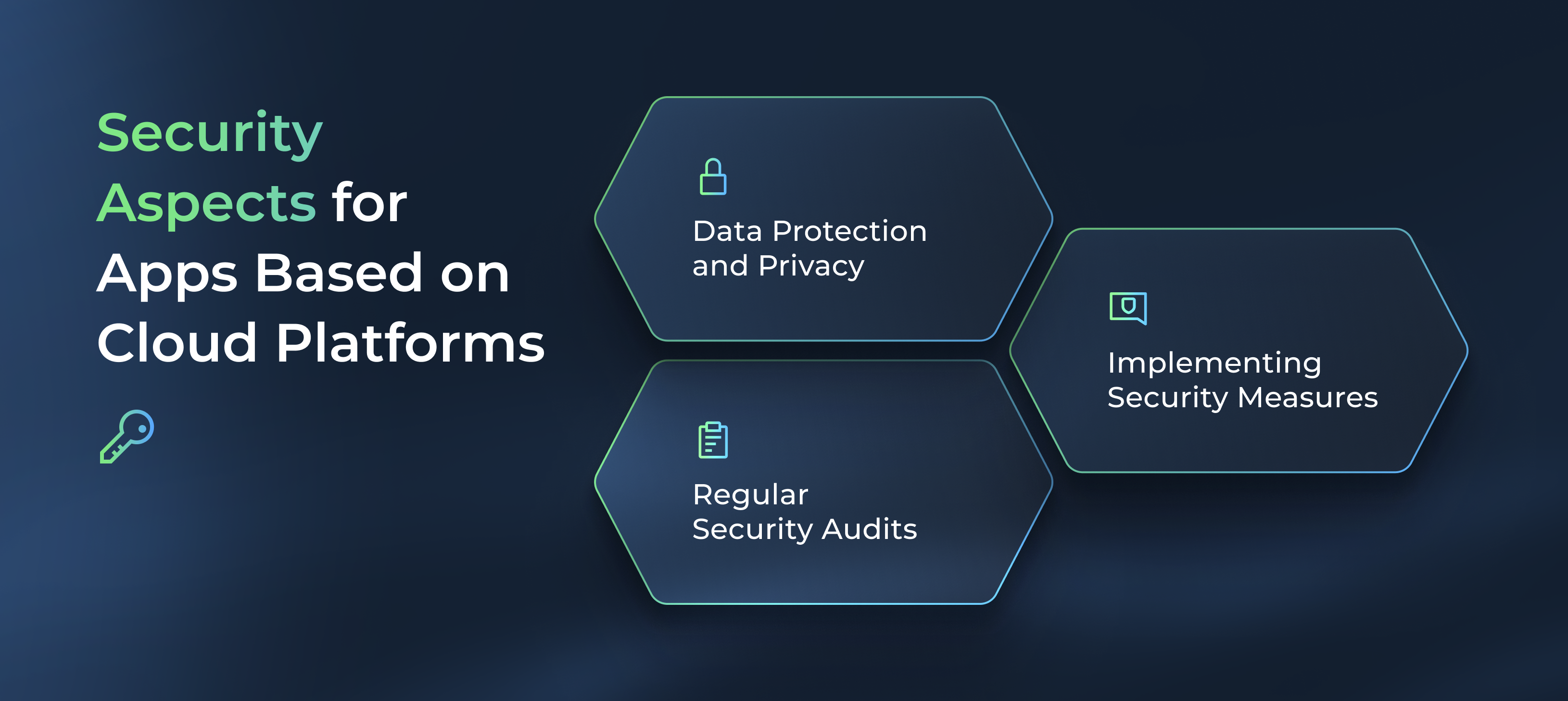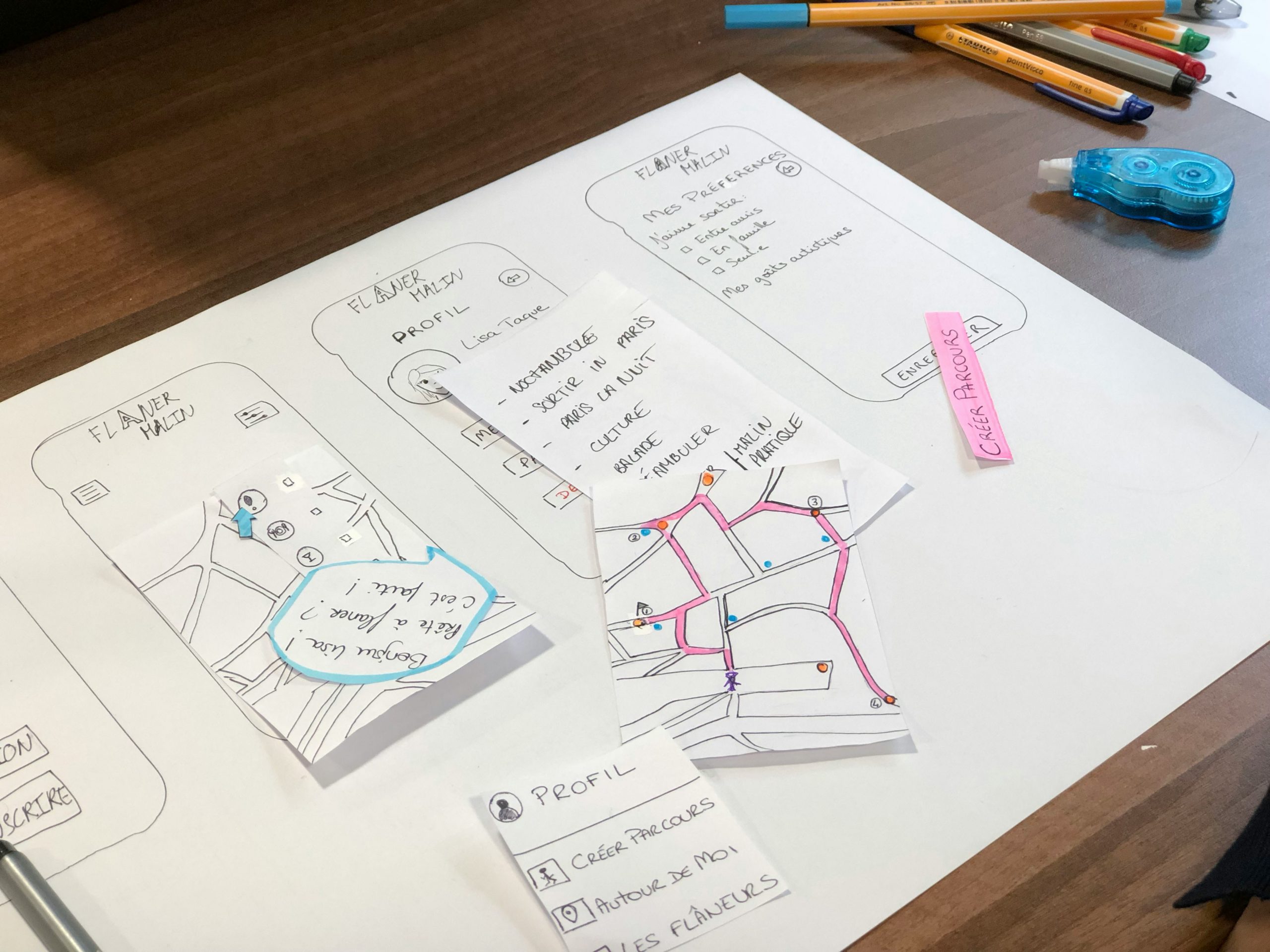Developing a cloud-based app can be a complex undertaking, but with the right tools and strategies, it can also be a rewarding experience. In this article, we will explore the essential steps and considerations involved in developing a cloud-based app. We will cover everything from understanding cloud-based apps to deploying and securing them. So, let’s dive in and explore how you can bring your cloud-based app idea to life.
What are Cloud-Based Apps?
Before we delve into the development process, let’s take a moment to understand what cloud-based apps are. In simple terms, a cloud-based app is an application that utilizes the resources and infrastructure provided by a cloud service provider. These apps leverage the power of the cloud to deliver scalable, reliable, and cost-effective solutions. By offloading the burden of managing hardware and infrastructure, cloud-based apps allow businesses to focus on their core competencies.
A cloud-based app is a software application that is hosted and accessed through the internet. It runs on remote servers, rather than on the user’s local device. This allows users to access the app and its data from anywhere, using any device with an internet connection. Cloud-based apps are built using cloud technologies and typically follow a client-server architecture, where the client-side app interacts with the server-side infrastructure to retrieve and store data.
Benefits of Cloud-Based Apps
The shift towards cloud-based apps has been driven by the numerous benefits they offer. From scalability to cost savings, cloud-based apps have revolutionized the world of software development. Here are some key benefits:
- Scalability: Cloud-based apps can easily scale up or down based on demand, allowing businesses to handle increased traffic without infrastructure constraints.
- Flexibility: Cloud-based apps offer the freedom to access and use applications from any location and on any device, making them highly versatile.
- Cost Savings: By leveraging the resources of a cloud service provider, businesses can eliminate the need for costly hardware investments and maintenance.
- Reliability: Cloud-based apps are hosted on redundant server clusters, ensuring high availability and minimizing the risk of downtime.
- Security: Cloud service providers implement robust security measures, ensuring the confidentiality, integrity, and availability of data.
Essential Tools for Developing Cloud-Based Apps

Now that we understand the concept and benefits of cloud-based apps, let’s explore the essential tools and technologies needed for their development.
Developing cloud-based apps requires careful consideration of various factors, including programming languages, cloud service providers, and development platforms. By choosing the right tools, you can ensure the success of your app and take advantage of the scalability and flexibility offered by cloud computing.
Choosing the Right Programming Language
The choice of programming language is crucial when developing cloud-based apps. It depends on a variety of factors such as your team’s expertise, project requirements, and scalability needs. Each programming language has its strengths and weaknesses, and selecting the right one can greatly impact the development process and the performance of your app.
Some popular programming languages for cloud-based app development include:
- Java: Known for its scalability, Java is a versatile language that can handle complex applications. It has a vast ecosystem of libraries and frameworks, making it a popular choice for enterprise-level cloud-based apps.
- C#: Developed by Microsoft, C# is widely used for building cloud-based apps on the .NET framework. It offers a balance between performance and productivity, making it suitable for a wide range of applications.
- Python: Python is a versatile language known for its simplicity and readability. It has a large community and a wide range of libraries and frameworks, making it an excellent choice for rapid development of cloud-based apps.
- Node.js: Built on Chrome’s V8 JavaScript engine, Node.js allows developers to build scalable and high-performance apps. It is particularly popular for building real-time applications and microservices in the cloud.
At WeSoftYou, we have a team of experienced developers who can help you choose the right programming language based on your specific needs and requirements.
Cloud Service Providers
When developing a cloud-based app, you’ll need to choose a reliable cloud service provider to host your application and manage your infrastructure. Cloud service providers offer a wide range of services and tools to support the development and deployment of your app.
Some popular cloud service providers include:
- Amazon Web Services (AWS): AWS is one of the leading cloud service providers, offering a comprehensive suite of services for building, deploying, and managing cloud-based apps. It provides scalable computing power, storage, and databases, among other services.
- Microsoft Azure: Azure is a cloud computing platform by Microsoft that provides a wide range of services for building, deploying, and managing cloud-based apps. It offers integration with other Microsoft tools and services, making it a popular choice for organizations already using Microsoft technologies.
- Google Cloud Platform: Google Cloud Platform provides a suite of cloud computing services for building, deploying, and scaling cloud-based apps. It offers a wide range of tools and services, including machine learning, big data analytics, and serverless computing.
By choosing the right cloud service provider, you can ensure the reliability, scalability, and security of your cloud-based app.
Development Platforms and Frameworks
Development platforms and frameworks simplify the app development process by providing pre-built components and tools. They enable developers to focus on writing code instead of managing infrastructure, accelerating the development process and improving productivity.
Some popular development platforms and frameworks for cloud-based app development include:
- AWS Lambda: AWS Lambda is a serverless computing platform that allows you to run your code without provisioning or managing servers. It enables developers to build and deploy applications in response to events, making it ideal for building scalable and event-driven cloud-based apps.
- Google App Engine: Google App Engine is a fully managed platform that allows you to build and deploy applications on Google’s infrastructure. It provides automatic scaling, load balancing, and built-in security, making it easy to develop and deploy cloud-based apps.
- Microsoft Azure Functions: Azure Functions is a serverless computing service that allows you to run your code in response to events. It supports multiple programming languages and provides seamless integration with other Azure services, making it a powerful tool for building cloud-based apps.
In addition to development platforms, frameworks also play a crucial role in cloud-based app development. They provide a foundation for developing scalable and maintainable apps by offering reusable components, libraries, and tools. Some popular frameworks for cloud-based app development include:
- Spring Boot: Spring Boot is a Java-based framework that simplifies the development of cloud-based apps. It provides a set of opinionated defaults and auto-configuration, allowing developers to quickly build production-ready applications.
- Django: Django is a high-level Python web framework that follows the model-view-controller (MVC) architectural pattern. It provides a robust set of tools and features for building scalable and secure cloud-based apps.
- Express.js: Express.js is a minimal and flexible Node.js web application framework. It provides a simple and intuitive API for building web and mobile applications, making it a popular choice for developing cloud-based apps.
By leveraging development platforms and frameworks, you can streamline the development process, reduce development time, and ensure the scalability and maintainability of your cloud-based app.
Cloud-Based App Development: Main Steps
Developing a cloud-based app requires a systematic approach and careful consideration of various factors. In this guide, we will walk you through the essential steps involved in creating a successful cloud-based app.
1. Planning Your App
Before diving into the development process, it is crucial to plan your app meticulously. Start by defining the objectives of your app. What problem does it solve? What value does it offer to users? Understanding the purpose of your app will guide you throughout the development process.
Next, identify your target audience. Who are the potential users of your app? Conduct thorough market research to gain insights into their needs, preferences, and pain points. This information will help you tailor your app to meet their expectations.
Once you have a clear understanding of your app’s objectives and target audience, it’s time to outline the core features. What functionalities should your app have? Prioritize the features based on their importance and feasibility.
At Wesoftyou, we recommend creating a detailed project plan that outlines the app’s functionality, user flow, and technical requirements. This plan will serve as a roadmap for the entire development process, ensuring that you stay on track and meet your goals.
2. Designing the App Interface
The design of your app is crucial for attracting and engaging users. A visually appealing and user-friendly interface can significantly enhance the overall user experience. To start designing your app, create wireframes and prototypes.
Wireframes are basic visual representations of your app’s layout and structure. They help you visualize the placement of different elements and the overall interaction flow. Prototypes, on the other hand, provide a more interactive experience, allowing you to test the usability of your app before diving into development.
When designing the interface, it is essential to align it with your brand identity. Use consistent colors, fonts, and visual elements that reflect your brand’s personality. Additionally, optimize the design for different devices and screen sizes to ensure a seamless user experience across various platforms.
3. Coding and Development
With a solid plan and design in place, it’s time to start coding and developing your app. Break down the development process into smaller tasks and assign them to your development team. This approach allows for better organization and efficient progress tracking.
Consider adopting agile development methodologies such as Scrum or Kanban. These methodologies promote iterative development, allowing you to deliver incremental updates and gather feedback along the way. Regular communication and collaboration within your team are crucial for a smooth development process.
During the coding and development phase, it’s essential to follow best practices and coding standards. This ensures that your app is maintainable, scalable, and robust. Regularly test your code to identify and fix any bugs or issues that may arise.
4. Testing the App
Thorough testing is a critical step in ensuring the quality and reliability of your cloud-based app. Start by conducting functional testing to verify that all the features and functionalities work as intended. This involves testing each component of your app individually and in combination.
Performance testing is also crucial to ensure that your app can handle the expected workload and deliver a smooth user experience. Test your app under different scenarios to identify any performance bottlenecks and optimize accordingly.
Security testing is another essential aspect of app development. Identify potential vulnerabilities and implement robust security measures to protect user data and prevent unauthorized access.
Implementing automated testing frameworks can significantly streamline the testing process and increase efficiency. These frameworks allow you to automate repetitive tests, saving time and effort. Additionally, consider conducting regular user acceptance testing (UAT) to gather valuable feedback and make necessary improvements based on user preferences and expectations.
By following these steps and paying attention to detail, you can develop a cloud-based app that meets the needs of your target audience and delivers a seamless user experience.
Deploying Your Cloud-Based App
Once your app is developed and tested, it’s time to deploy it to a cloud environment. This crucial step will enable your app to be accessible to users from anywhere in the world. Deploying your app to the cloud offers numerous benefits, including scalability, availability, and cost-efficiency.
Choosing the Right Cloud Environment
When it comes to deploying your app, one of the first decisions you’ll need to make is selecting the right cloud environment. There are several options available, including public, private, and hybrid cloud environments. Each has its own advantages and considerations.
A public cloud environment, such as Amazon Web Services (AWS) or Microsoft Azure, offers a shared infrastructure that is managed by a third-party provider. This option is cost-effective and provides scalability, as resources can be easily scaled up or down based on demand. However, it may not offer the same level of control and security as a private cloud environment.
A private cloud environment, on the other hand, is dedicated solely to your organization. This option provides greater control and security, as you have full ownership and management of the infrastructure. However, it may require a higher upfront investment and ongoing maintenance costs.
A hybrid cloud environment combines the best of both worlds, allowing you to leverage both public and private cloud resources. This option offers flexibility and scalability, as you can utilize public cloud resources for peak workloads while keeping sensitive data and critical applications in a private cloud environment.
Scaling Your App
One of the key advantages of deploying your app to the cloud is the ability to scale resources up or down as needed. This ensures optimal performance during peak times and cost efficiency during quieter periods. Implementing auto-scaling mechanisms is essential to achieve this.
Auto-scaling allows your app to automatically adjust its resource allocation based on demand. When there is a surge in traffic, additional resources are provisioned to handle the increased workload. Conversely, when traffic decreases, unnecessary resources are automatically released, reducing costs.
Implementing auto-scaling requires careful planning and monitoring. You’ll need to set up thresholds and triggers to determine when additional resources should be provisioned or released. Monitoring tools, such as AWS CloudWatch or Google Cloud Monitoring, can help track performance metrics and detect anomalies that may require scaling adjustments.
Monitoring and Maintenance
Deploying your app to the cloud is not a one-time event. Ongoing monitoring and maintenance are essential to keep your app running smoothly and ensure its long-term success. Monitoring tools play a crucial role in this process.
By implementing monitoring tools, you can track key performance metrics, such as response time, CPU utilization, and error rates. This allows you to proactively identify any issues or bottlenecks and take corrective actions before they impact the user experience.
In addition to monitoring, regular maintenance is necessary to keep your app up to date with the latest security patches and feature enhancements. Cloud providers often release updates and improvements to their services, and it’s important to stay current to take advantage of these advancements.
Maintenance also involves ongoing optimization of your app’s infrastructure and architecture. As your app evolves and user demands change, you may need to make adjustments to ensure optimal performance and cost efficiency.
In conclusion, deploying your app to the cloud is a critical step in making it accessible to users worldwide. By choosing the right cloud environment, implementing auto-scaling mechanisms, and prioritizing monitoring and maintenance, you can ensure the success and longevity of your cloud-based app.
Security Considerations for Cloud-Based Apps

As with any software application, security is a paramount concern for cloud-based apps. Here are some key security considerations:
Data Protection and Privacy
Ensure that your app adheres to data protection regulations and implements proper encryption and access controls. Regularly back up your data and have a data recovery plan in place to mitigate the risk of data loss.
Implementing Security Measures
Implement a multi-layered security approach that includes features such as firewalls, intrusion detection systems, and secure authentication mechanisms. Regularly update your app’s dependencies and libraries to patch any security vulnerabilities.
Regular Security Audits
Perform regular security audits to identify and address any potential vulnerabilities in your app’s code and infrastructure. Conduct penetration testing to simulate real-world attacks and ensure your app can withstand intrusion attempts. Engaging a reputable cybersecurity firm can provide an unbiased assessment of your app’s security posture.
Future Trends in Cloud-Based App Development
As technology continues to evolve, so does the landscape of cloud-based app development. Here are some future trends to keep an eye on:
Serverless Computing
Serverless computing is gaining traction as developers seek to focus solely on writing code and let cloud service providers handle the infrastructure. With serverless architecture, developers pay only for the actual usage of resources, leading to cost savings and increased scalability.
Artificial Intelligence (AI) and Machine Learning
AI and ML are transforming the capabilities of cloud-based apps. From intelligent chatbots to personalized recommendations, these technologies empower apps to provide more intelligent and tailored experiences to users.
5G in Cloud-Based Apps
The rollout of 5G technology promises faster and more stable internet connections, opening up new possibilities for cloud-based apps. With reduced latency and higher bandwidth, 5G enables real-time collaboration, immersive experiences, and seamless connectivity.
In conclusion, developing a cloud-based app requires careful planning, the right tools, and an understanding of the current and future trends. We at Wesoftyou specialize in software development and have a proven track record in creating successful cloud-based apps for businesses all around the world. If you have an idea for a cloud-based app or need assistance with your app development project, feel free to contact us for a free consultation or project estimation. Our team of experts is ready to help you turn your vision into a reality.
FAQ
Yes, it is possible to migrate an existing app to the cloud. However, the process requires careful planning and consideration of your app’s unique requirements. Our team at Wesoftyou can assist you in assessing the feasibility and benefits of migrating your app to the cloud.
The choice of cloud service provider depends on various factors such as your app’s specific needs, scalability requirements, and budget. AWS, Azure, and Google Cloud Platform are all reputable providers with robust offerings. We can help you evaluate your options and select the most suitable provider for your app.
The development timeline for a cloud-based app can vary depending on factors such as app complexity, required features, and team size. From our experience, it typically takes several months to develop a fully functional cloud-based app. However, we recommend starting with an MVP (Minimum Viable Product) to validate your concept and gradually enhance the app based on user feedback and market demand.
The cost of developing a cloud-based app depends on several factors, including app complexity, required features, and development resources. At WeSoftYou, we offer customized solutions tailored to your specific requirements and budget. Contact us for a free consultation and project estimation to get a better understanding of the costs involved.
Security is a critical aspect of cloud-based app development. Implementing robust security measures such as encryption, access controls, and regular security audits is essential. Engaging experienced cybersecurity professionals to conduct penetration testing and provide ongoing security monitoring can help ensure the highest level of protection for your app.





















